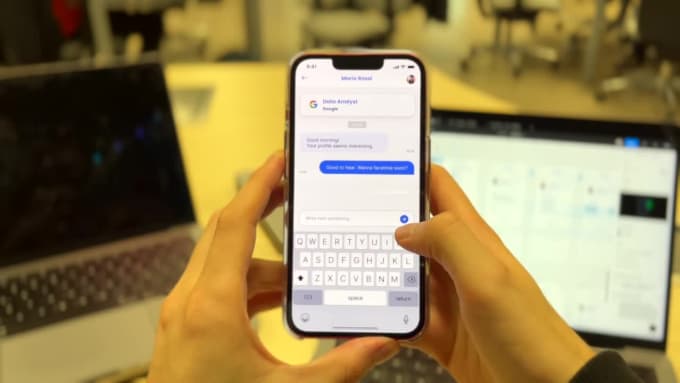Elevate Your App Experience with Cutting-Edge UI and UX Design
For only $120, Fabiopizzano will design a modern app UI and UX. | Hello folks!I amFabioand I am a UI/UX Designer at the Apple Developer Academy in Naples, Italy.I am here to offer you my skills to design | Fiverr
👉 Reviews! / See all reviews 💯

Hello folks!
I am Fabio and I am a UI/UX Designer at the Apple Developer Academy in Naples, Italy.
I am here to offer you my skills to design a modern and effective user interface and experience for your app.
Before starting, I will need a clear explanation of your project, including your target and goals.
As the primary tool I use Figma and I can offer you developer-ready assets in the final delivery.
Drop me a message and let’s get started!
## Designing a Modern App UI and UX: A Comprehensive Guide
### Introduction
In the rapidly evolving digital landscape, the user interface (UI) and user experience (UX) of mobile applications have become critical factors in attracting and retaining users. A well-designed app not only enhances the user’s interaction with the application but also contributes to its overall success and user satisfaction.
### The Importance of UI and UX
A well-designed UI provides an intuitive and visually appealing interface that makes it easy for users to navigate and engage with the application. The colors, typography, and layout should be carefully chosen to create a consistent and aesthetically pleasing experience.
UX, on the other hand, focuses on the overall user journey and how users interact with the application. It involves designing the flow of the application, the placement of elements, and the way users navigate through various screens. A well-thought-out UX ensures that the application is easy to use, efficient, and enjoyable.
### Elements of a Modern App UI and UX
**1. Navigation:** Navigation is a key element that allows users to navigate through the application seamlessly. It includes elements such as menus, tabs, and navigation bars. The navigation structure should be intuitive and should provide a clear understanding of the application’s layout.
**2. Content Structure:** The content structure refers to the organization and presentation of information within the application. It involves dividing the content into logical sections and using layout elements such as headings, subheadings, and bullet points to make the content easy to read and understand.
**3. Typography:** Typography plays a crucial role in enhancing the readability and visual appeal of the UI. The font size, style, and color should be carefully chosen to ensure that the text is easy to read and visually appealing.
**4. Color Palette:** The color palette used in the UI should be consistent and should reflect the brand identity of the application. The colors should be chosen to create visual hierarchy and to guide the user’s attention.
**5. Interaction Design:** Interaction design involves designing the way users interact with the application. This includes elements such as buttons, sliders, and gestures. The interaction design should be intuitive and should provide immediate feedback to the user.
### Best Practices for Designing a Modern App UI and UX
**1. User-Centered Design:** The design process should be centered around the needs and preferences of the users. It involves conducting user research, creating user personas, and iteratively testing the design with users to ensure that it meets their expectations.
**2. Simplicity and Clarity:** The UI and UX should be simple and easy to understand. Avoid overwhelming users with too much information or complex navigation. Use clear and concise language to guide users through the application.
**3. Consistency:** The UI and UX should be consistent throughout the application. This includes using the same colors, typography, and navigation patterns across all screens. Consistency enhances the user’s familiarity with the application and reduces cognitive load.
**4. Responsive Design:** The application should be designed to respond to different screen sizes and orientations. This ensures that the UI and UX remain optimal regardless of the device the user is using.
**5. Accessibility:** The UI and UX should be designed to be accessible to users with disabilities. This includes features such as text-to-speech capabilities, high-contrast mode, and keyboard navigation.
### Conclusion
Designing a modern app UI and UX is a complex and iterative process that requires a deep understanding of user needs and a holistic approach to design. By following best practices and leveraging the latest design tools, it is possible to create applications that are both visually appealing and highly functional. A well-designed UI and UX can ultimately lead to increased user engagement, satisfaction, and overall app success.
Leave a Reply